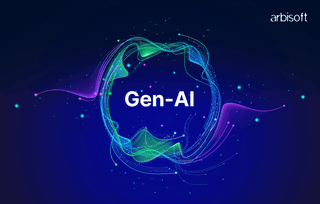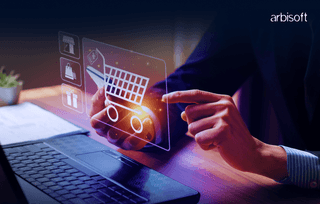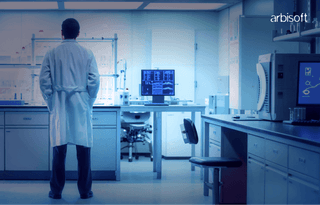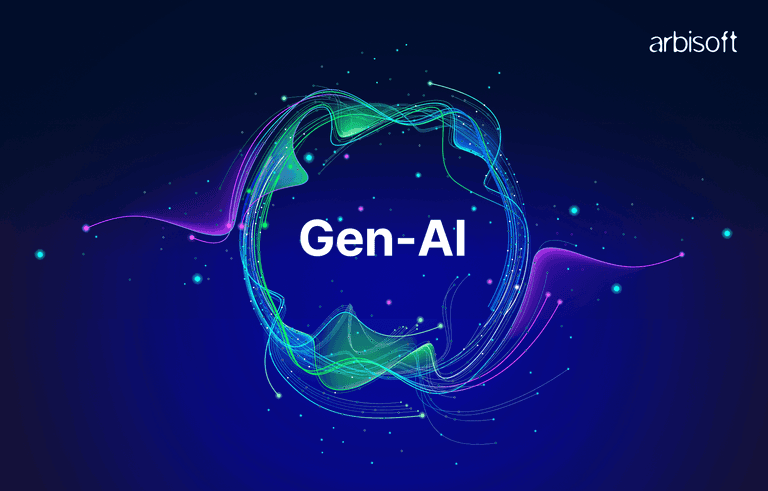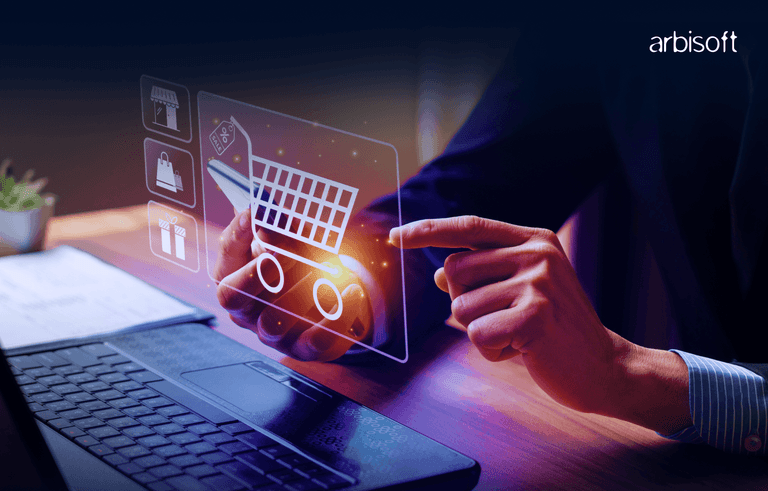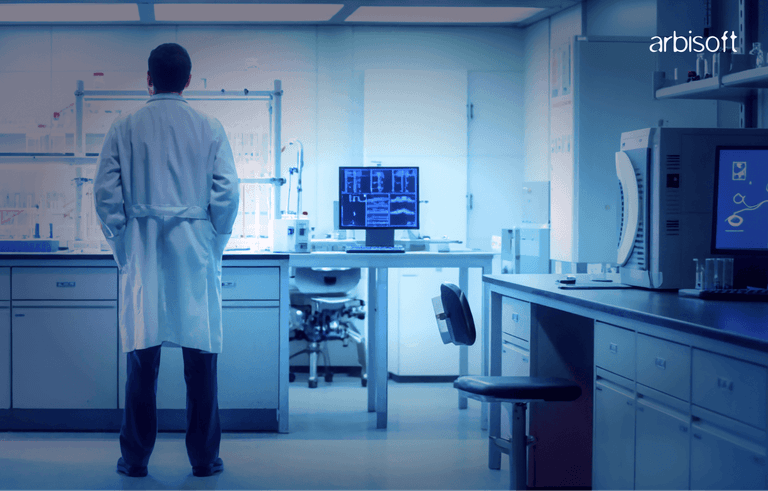We put excellence, value and quality above all - and it shows




A Technology Partnership That Goes Beyond Code

“Arbisoft has been my most trusted technology partner for now over 15 years. Arbisoft has very unique methods of recruiting and training, and the results demonstrate that. They have great teams, great positive attitudes and great communication.”
Ghibli AI: A Viral Phenomenon and Its Controversial Impact

AI is changing art, and OpenAI’s latest tool is proof of how artificial intelligence solutions are transforming creative fields. It lets people create pictures in the style of Studio Ghibli, the famous animation studio behind Spirited Away and My Neighbor Totoro.
The internet went crazy! Social media was flooded with Ghibli-style AI images. People turned celebrities, historical figures, and even themselves into dreamy, hand-drawn illustrations. It was fun, creative, and magical.

But not everyone was happy about it.

Some questioned whether it was fair for AI to copy an artist’s style without permission. Could AI eventually replace real artists? And was it okay to turn serious historical events into cute, fairy-tale-like pictures? The debate rages on. Some people see it as a fun, easy way to create art, while others feel it threatens real creativity. Was this a cool new way to make art, or is AI stealing creativity?
In this blog, we will cover all these aspects, but first, let’s look at why the Ghibli AI trend went viral.
Why Did Ghibli AI Go Viral?
It all started when OpenAI launched a new image tool in its ChatGPT app. It could create pictures that looked just like Studio Ghibli’s famous hand-drawn animation.
People were hooked. Soon, platforms like X, Instagram, Reddit, and even LinkedIn were full of Ghibli-style AI images. Everything, from famous people to everyday scenes, was turned into beautiful animated art — a reflection of how AI enables hyper-personalization in creative expression.
Even OpenAI’s CEO, Sam Altman, joined in. He changed his profile picture to a Ghibli-style AI image, making the trend even bigger.

The hype was so massive that OpenAI struggled to keep up. At one point, Altman tweeted,
"Can y'all please chill on generating images? This is insane, our team needs sleep."

As a result of this trend, OpenAI saw a huge increase in engagement:
- 11% more app downloads for ChatGPT
- 5% more weekly active users
- 6% more revenue from subscriptions
Clearly, people were fascinated by this feature. But the excitement didn’t last long. Like it or not, Ghibli AI has started a big debate. Is this the future of art, or is AI taking over too much?
Studio Ghibli co-founder, Mr. Miyazaki, shared strong opinions about AI-generated images back in 2016, and his comments came up again after the recent trend took off.
“I am utterly disgusted”
Mr. Miyazaki said after seeing an early AI-generated image.
He also added
“I would never want to use this technology in my work.” (REUTERS)
The Controversy: Ethical and Legal Issues of AI-Generated Ghibli Art
With the buzz surrounding Ghibli AI, it's only natural that a deeper conversation unfolded. People began to question the ethics behind the tool and its implications for the art world. The following issues became the center of the debate:
1. Is AI Taking Studio Ghibli’s Art Without Permission?
Many people believe AI has been trained using Studio Ghibli’s artwork without permission. This raises big concerns:
- Copyright issues: AI may have learned from Ghibli’s art without asking.
- Copying vs. Inspiration: Artists take inspiration, but AI directly copies styles.
- Who owns the art?: If AI can make art like an artist, can anyone claim it?
Hayao Miyazaki, does not support AI art. He said:
“I strongly feel that this is an insult to life itself.”
This raises an important question: Should AI be allowed to copy an artist’s style without permission?
2. AI Art and Historical Events
Some people used AI to create Ghibli-style images of real-world tragedies, which caused controversy. Examples include:
- Hiroshima and Nagasaki bombings in a soft, colorful style.
- 9/11 attacks reimagined as fantasy scenes.
- Political leaders shown in dreamy, cartoon-like settings.
Many found these images offensive and said AI should not be used this way. This has led to debates on whether AI art should be more strictly controlled.
3. AI’s Impact on Human Artists
AI can copy artistic styles, and this worries many artists. The biggest concerns include:
- Fewer jobs: If AI can create art quickly, will companies stop hiring artists?
- Less originality: If AI makes thousands of artworks, will unique art lose value?
- AI replacing artists: Skills like background design and character creation, which take years to learn, can now be done by AI in seconds.
This is a growing issue in animation because:
- Studios already use AI for concept art and background designs.
- AI may replace entire animation teams in the future.
This raises a big question: Will AI help artists or take their jobs?
AI’s Role in Animation and Entertainment
While the debate rages on about ethics and job security, AI's growing presence in the animation industry is undeniable. Large animation studios are increasingly relying on AI for tasks such as:
1. AI in Animation Studios
Big animation companies are now using AI to:
- Create concept art quickly.
- Make background designs automatically to save time and money.
- Help with storyboarding to speed up production.
This could make animation cheaper, especially for small studios. However, there are risks:
- Fewer jobs for artists.
- Too much AI-generated content, making art feel less human.
2. The Legal Debate
Governments are now discussing how to regulate AI-generated art. Some suggestions include:
- Labeling AI-made images so people know they are not human-made.
- Letting artists decide if their work can be used for AI training.
- New copyright laws to stop AI from copying art styles without permission.
Right now, AI art has no clear legal rules, but that could change soon. However, another major issue related to copyrights is also at the forefront.
Is It Fair to Copy an Artist’s Style? The Copyright Debate
Beyond the ethical concerns, another big debate started: Was it fair for AI to copy the style of an artist like Hayao Miyazaki without permission?
Many artists strongly opposed this feature. They argued that Studio Ghibli’s style is the result of years of hard work, creativity, and experience, something an AI model did not create but simply imitated.
Ed Newton-Rex, the CEO of Fairly Trained, spoke out against this, calling it
“a takeoff moment for AI protests.”
He compared it to the Scarlett Johansson controversy, where OpenAI allegedly copied her voice without permission for an AI assistant.
For many, AI-generated art feels like stealing from real artists. AI companies are profiting from these models, but the original artists aren’t getting any recognition or compensation.
To fight against this, some lawmakers are pushing for stricter AI regulations. These new rules would:
- Require AI-generated images to have clear labels so people know they aren’t real art
- Ensure artists get paid if AI uses their work
- Stop AI models from copying living artists without permission
But enforcing these rules is difficult. Even though OpenAI has tried to block users from mimicking specific art styles through prompt engineering safeguards, people still find ways around these restrictions.
Why Studio Ghibli’s Style Feels Special
Part of the reason this debate is so emotional is that Studio Ghibli’s art is more than just a visual style, it’s a feeling.
Ghibli films are loved all over the world because they create a deep emotional connection with viewers. Their hand-drawn animation feels warm, nostalgic, and full of life. Every scene is carefully designed to capture emotions and tell a story.
AI-generated images may look similar, but they lack the soul of real Ghibli art. AI does not understand the feelings behind the style, it only copies the patterns. That’s why, even though AI can create stunning images, many people feel they are empty compared to real artwork.
This raises another important question: Can AI ever truly create art, or is it just a tool for imitation? But, the answer is not clear yet, only time will tell.
How Artists Are Fighting Back
Artists are fighting to protect their work. Some are:
- Raising awareness about AI-generated art and its impact on human creativity
- Taking legal action to demand fair treatment from AI companies
- Finding ways to work with AI rather than against it, using AI tools as part of their creative process
Others are calling for the development of ethical AI tools, where artists can choose to opt in and receive compensation if their work is used for AI training.
What Does This Mean for the Future of Art?
Even with the backlash, AI-generated art isn’t going away. AI companies are making their models more advanced, and the technology is improving faster than most people expected. Many people are now curious, will the latest AI models like Kimi K1.5, DeepSeek, and Alibaba’s Qwen also include similar image-generation features in the future? It will be interesting to see how far this trend spreads and how these new models respond to it
This is also raising new concerns about job security for artists. If AI can create professional-level images instantly, will businesses still hire human designers and illustrators?
The impact isn’t limited to visual art. The music industry is already struggling with AI-generated songs that sound like real artists. Publishers worry that AI could flood the market with AI-written books.
If AI keeps improving through techniques like transfer learning, many fear that human creativity could be replaced, leading to a future where AI dominates artistic industries.
So, Can AI and Human Art Coexist?
The debate around Ghibli AI is part of a much larger conversation about how AI should be used in creative fields. AI has the power to help artists and expand creativity, especially with the rise of sophisticated generative models, but it also has the potential to exploit artists and replace them.
As technology moves forward, we have to find a way to balance AI innovation with respect for human creativity. If AI companies, regulators, and artists work together, we might be able to create a future where AI is a tool for artists, not a replacement for them.
But if we don’t set clear rules now, we risk losing the value of human-made art, turning creativity into just another thing AI does for us.
If you're exploring how generative AI can support your creative or business projects, Arbisoft offers custom generative AI solutions designed to help you build responsibly and effectively.
What People are Asking About This Topic?
1. Is OpenAI stealing art from Studio Ghibli?
Some people are concerned that OpenAI’s models have been trained on Studio Ghibli’s artwork without permission. This raises worries about copyright issues and who owns the rights to AI-generated images Ghibli style.
2. Why are some AI-generated images of historical events in Ghibli style controversial?
Some AI-generated images Ghibli depict serious events, like the Hiroshima and Nagasaki bombings or 9/11, in a light, Ghibli-like style. Many find this disrespectful, leading to a debate on whether tools like ChatGPT image generation should be used for such sensitive topics.
3. How does AI affect jobs for human artists?
With OpenAI creating AI-generated images Ghibli and other artwork quickly, many artists worry that AI could replace jobs in animation studios, where human workers traditionally create background art, character designs, and more.
4. Should AI art, like Ghibli-style images, be labeled differently?
Some believe AI-generated images Ghibli should be clearly labeled as “AI-made” to help people recognize the difference between art made by AI and human artists.
5. Who owns the rights to AI-generated art like Ghibli-style images?
The ownership of AI-generated images Ghibli is unclear, and there’s ongoing discussion about creating new rules to give artists control over whether their work is used in AI training or to prevent AI from copying their unique artistic styles.








